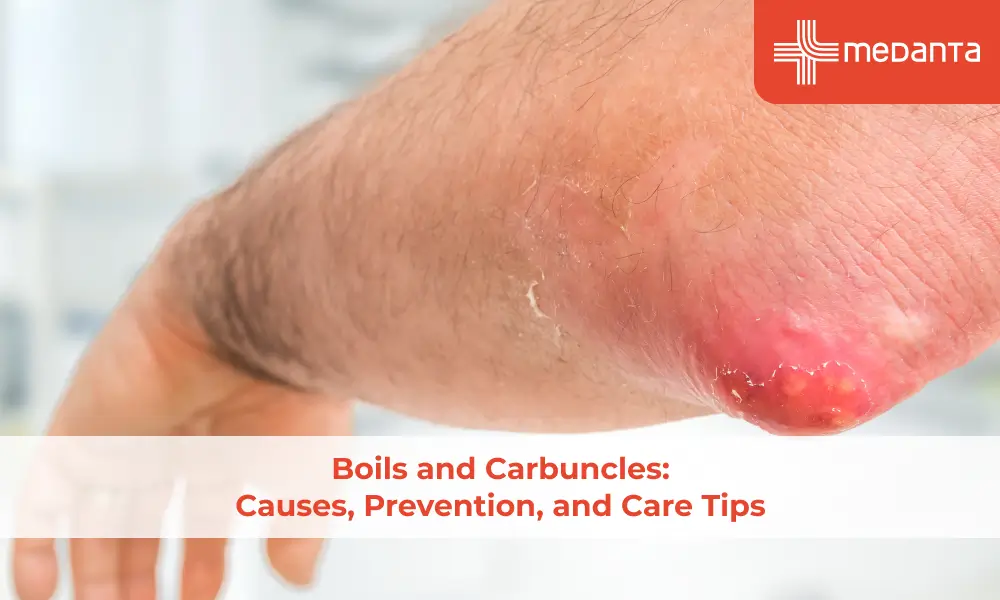Primary liver cancer in children and babies that is most common – Medanta

The Most Typical Primary Liver Cancer in Children and Newborns
Primary liver cancer is the third most common childhood cancer, yet it is one of the most devastating cancers for children and newborns. It is important to be aware of the symptoms and treatment options available to give these young patients the best chance at a full recovery. Here at Medanta, we strive to provide up-to-date information on the most typical primary liver cancer in children and newborns so that families can be informed and prepared for what lies ahead.
Causes of Primary Liver Cancer in Children and Newborns:
Primary liver cancer is a type of cancer that affects the liver and typically occurs most frequently in children and newborns. It can be caused by a variety of factors, including genetic predisposition, environmental exposures, and even some inherited diseases. In addition to these causes, primary liver cancer can also be caused by certain infections or viral hepatitis.
Most Common Cancer Types:
The most common types of adult cancers include lung cancer, breast cancer, prostate cancer, and colorectal cancer. All these forms of cancer have their own unique set of symptoms which should be monitored closely for early detection. Common signs such as unexplained weight loss or fatigue should be noted and discussed with a doctor if they persist for an extended period.
Pediatric Cancer and Liver Cancer:
Pediatric cancer and liver cancer are two diseases that affect thousands of people every year. They can be challenging to understand, but it's important to have a basic understanding of these two types of cancer to make informed decisions about your health.
Pediatric Cancer:
Pediatric cancer is defined as any cancer diagnosis in a person under the age of 18. According to the National Cancer Institute, it accounts for nearly 1% of all cancers diagnosed each year. Though pediatric cancer is rare, it is still a major cause of death in children younger than 15. The most common types of pediatric cancers are leukemia, brain, and spinal cord tumors, lymphoma, and neuroblastoma.
Liver Cancer in Children:
Liver cancer affects adults more often than children but can still occur in young people under the age of 18. We estimate that approximately 1 out of every 10 cases of liver cancer occurs in children from infancy to adolescence. Risk factors for childhood liver cancer include exposure to certain chemicals like vinyl chloride or arsenic; having chronic hepatitis B or C infections; being born with an inherited liver disorder and being exposed to high levels of radiation before birth (such as through medical imaging procedures).
Understanding pediatric cancer and liver cancer is essential if you're facing this situation in real life – whether you’re caring for a child yourself or know someone who is affected by these conditions. Coping with pediatric cancer can be emotionally draining for both parents and their children – but there are support resources available at every step along this journey.
Childhood Cancer Symptoms:
As for childhood cancers, there are several common types including leukemias (ALL & AML),lymphomas (Hodgkin’s & Non-Hodgkin’s), brain tumors, Wilms tumors, retinoblastoma, and neuroblastoma. Of course, each type has its own set of symptoms which should be monitored closely by parents and doctors alike. Common warning signs can include persistent headaches or earaches, swollen glands or lumps under the skin, shortness of breath, bone pain or fractures that do not heal quickly enough with rest or treatment at home, extreme fatigue or paleness in the skin regularly., night sweats or fevers that do not respond to fever reducers like ibuprofen or acetaminophen.
Diagnosis:
Diagnosis for primary liver cancer typically includes imaging tests such as CT scans or MRI scans as well as blood tests and biopsies of any suspicious areas. Once the diagnosis has been made, the most appropriate treatment plans can be discussed between the patient’s doctor and their family.
Treatment Options:
Treatment options for primary liver cancer vary depending on the severity of the case but they usually involve chemotherapy, radiation therapy, or surgery. Chemotherapy involves using drugs to kill off the cancer cells while radiation therapy uses high-energy rays to destroy them as well. Surgery may also be recommended if necessary to remove any tumors that cannot otherwise be treated with either chemotherapy or radiation therapy.
Prevention Strategies:
In addition to treatment plans, there are also prevention strategies available that should be considered to reduce the risk factors associated with this form of cancer. Common prevention strategies include avoiding exposure to toxins such as cigarette smoke or air pollution; eating a balanced diet rich in antioxidants; maintaining a healthy weight; getting regular checkups; limiting alcohol consumption; avoiding certain viruses that can lead to hepatitis; and reducing stress levels.
Conclusion:
At Medanta, we strive to stay informed about advances in treatment for primary liver cancer so that we can provide families with up-to-date information on this form of childhood cancer. We understand how devastating it can be for both patients and families alike when facing such illnesses, so we remain committed to providing our patients with compassionate care throughout their journey toward recovery from this disease.






